Ponton Rafts
People have been building rafts for hundreds of years. The basic design involves tying things together to create a floating platform.
Traditional rafting is about paddling along on a raft made from wooden poles, rope, and barrels. More modern crafts tend to use sealed barrels or polystyrene blocks to help them float. They’re simple crafts, so you’ll need to paddle a bit differently compared to how you’d paddle something like a canoe.
The best pioneering projects are the ones that are plenty of fun.
Traditional rafting is a great way to try something new as these rafts are very different to other crafts.
It’s also a true test of teamwork, as you’ll all need to play your part to get the raft moving in the right direction.
Keep warm and dress for the water temperature, not the air.
You can always cool off in the water.
Building on Land
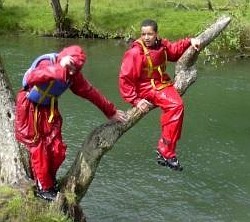
Scouts look for a good launch site, wading or swimming.
One team member goes into chest deep water to check the launch site for obstacles.
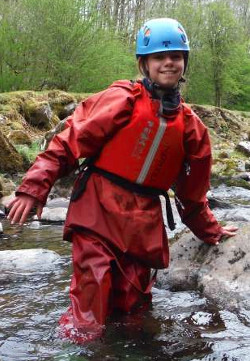
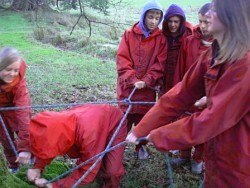
Dressed for the water the team builds the raft on land before floating it.
Raft building is often part of a team building exercise. You have to work well together to make this float.
Launch and Seaworthiness
The instructor must make sure the raft is seaworthy.
This is best done in a calm and sheltered area of the lake or river.
The team pushes the raft into waist deep water and then climbs onto it.
If it capsizes or comes apart, some design changes should be considered.
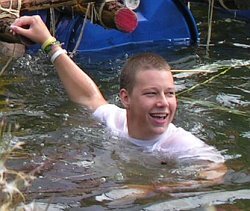
Big rafts have to be pushed into deeper water before you can climb on. Often you need to fix the raft from the water.
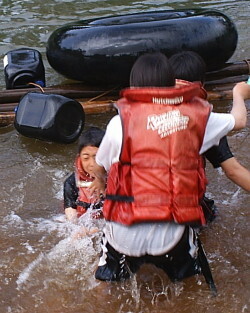
Many rafts come apart at launch and the team gets very wet.
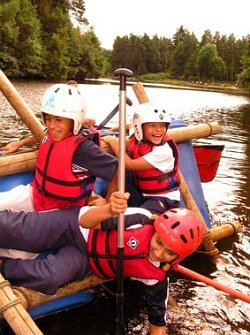
Capsizing at launch is fun.
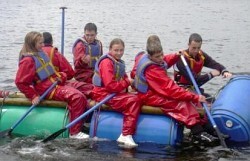
Don't expect to stay dry.
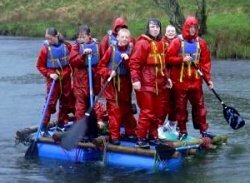
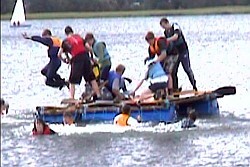
Rafts are a great bathing platform.